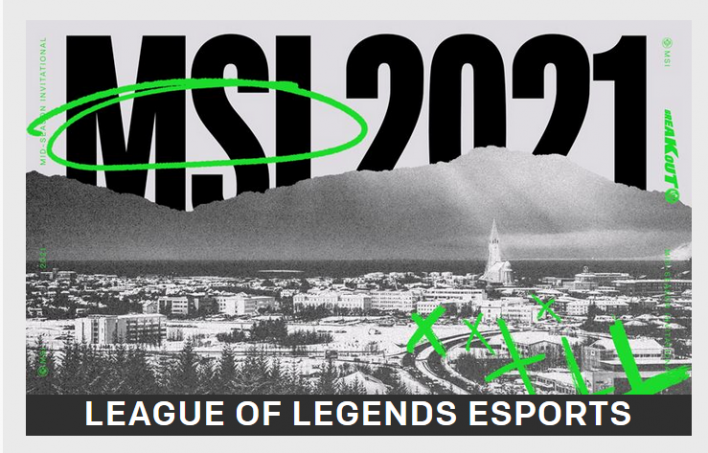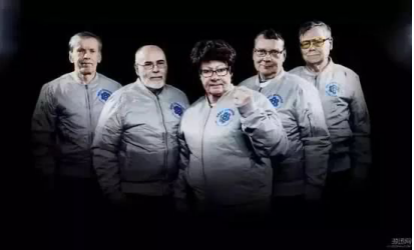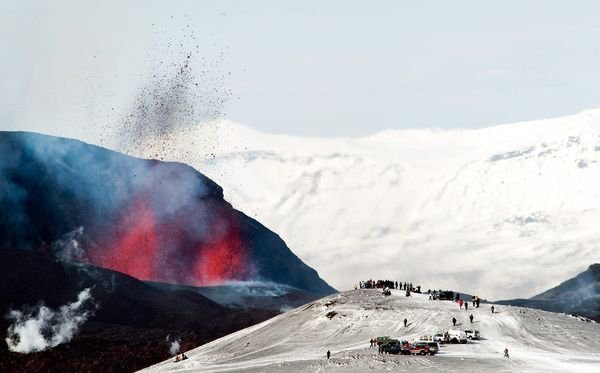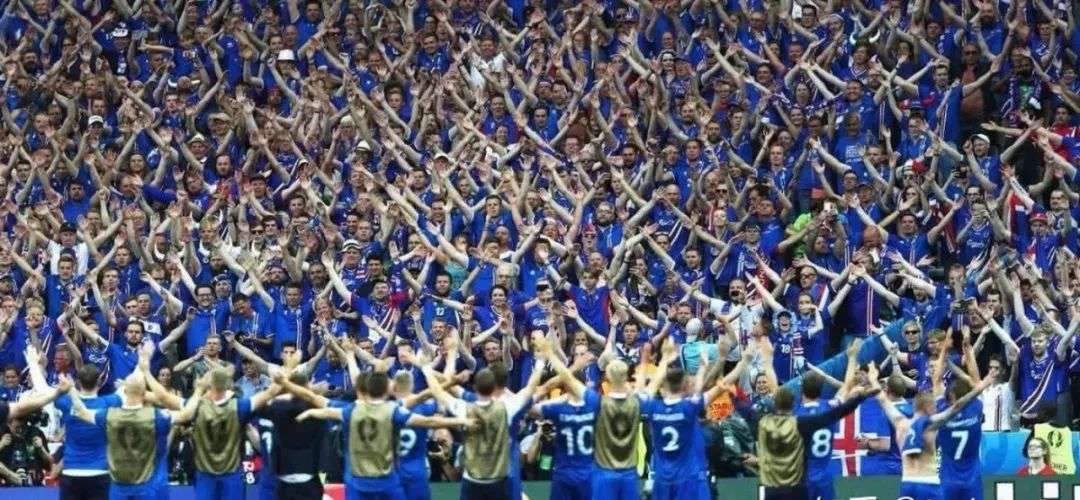Does Fist choose Iceland, or Iceland choose MSI?
Editor’s note: This article is from the micro-channel public number “nuclear race” (ID: Coreesports), Author: Zhang Yi Nan.
Is Fist choosing Iceland, or Iceland choosing MSI?
The scenery of the Northland, thousands of miles of ice, thousands of miles of snow drifting. The original verse describing the northern part of our country can also describe another northern country — Iceland, which is 7694.9 kilometers away from our country in a straight line. Located at the confluence of the Atlantic and Arctic Oceans, one-eighth of Iceland is covered by glaciers. Just like its name, it gives people a misty and gloomy feeling. It is such a country on the edge of the Arctic Circle with 10.3 million inhabitants. Among them, 300,000 local aborigines and 10 million WeChat cloud residents. This may be a tourist destination that many people dream of, but in fact Iceland is not a livable place. Aside from the harsh and changeable climate, the life of Icelanders is far less dignified than imagined. This is a dull life that can no longer be described as boring. The special terrain makes it impossible to build subways and railways, and travel can only rely on buses, bicycles or choose to walk. Except for electricity and hot springs, everything else needs to be imported. Even Reykjavik, the capital of two-thirds of the country’s population, couldn’t find a Starbucks or McDonald’s. The Americans used to describe the Icelanders as “rich Puritans”. Perhaps God just gave them this wonderland of Iceland as a promised land just to make up for their enduring life. Iceland, which is independent of the world, is called “the last pure land in the world”, which is especially mysterious to most people who have never been. But this mystery will be broken this year by fist moving the 2021 mid-season to the capital Reykjavik. In the early morning of March 2, the League of Legends officially announced that the mid-season game will be held in Iceland from May 6 to May 22. This time Fist drew the map farther, after North America, Asia, and Europe, it came to Northern Europe.
Nordic e-sports talent circle
Midseason came to Northern Europe for the first time, but e-sports has long been a frequent visitor to Northern Europe. Many star e-sports players come from the Nordic region. For example, DOTA2 players Topson and Jerax from Finland. After winning the TI8, he was received by the Queen of Finland and the President. Serral, who was also a Finnish StarCraft 2 player, was also received by the President at the Finnish Independence Day banquet in 19 years. Topson and Jerax’s teammate Notail is from Denmark not far from Finland. We are familiar with G2 mid laner C.Both aps and old teammate Wunder are from Denmark. The Nordics cannot be ignored in the e-sports arena. Out of 11 DOTA2 Majors, the Nordics have won 8 of them. A netizen posted a map on Reddit and said that “Half of the world champions who have won the CSGO Major came from here.” The circled place in the picture is in Northern Europe. The most exaggerated one was the 14th Major, where 36 of the 70 players from all over the world participated in the competition.
Maybe everyone thinks that the Finnish President’s meeting with e-sports players is the highest standard. However, the small Nordic countries have far more ambitions for e-sports. As early as 2017, Finland recognized e-sports players as athletes, granted tax preferential treatment, relaxed military service and other policies. Similar policies were not implemented until last year in South Korea, which is known as the “e-sports sovereign state.” In fact, it is not only Finland, but also the entire Nordic government. In recent years, the Danish government also intends to develop e-sports as one of its national strategies. Anders Bech, Major of the Human Resources Organization of the Danish Ministry of Defence, said in an interview with the media: “E-sports players have the characteristics of being able to remain calm in a stressful environment. They also react faster and make decisions faster than other young people. There is also a good team. Cooperation skills and sense of direction, as well as strong imagination.” It is worth mentioning that this is not empty talk. The famous Danish e-sports club Astralis (Team A for short) participated in the recruitment test, and the results showed that their reflexes and hand-eye coordination abilities are far beyond ordinary people. The Danish Ministry of Defence believes that e-sports players have great potential to become excellent pilots, flight commanders and radar operators. Based on this, when the game players were specially recruited in 2017, the number of applications received was twice as high as before. This allowed them to quickly find a suitable applicant and execute a difficult flight plan. Similarly, the Danish Prime Minister Lars Løkke Rasmussen has also publicly expressed his views on the e-sports industry. He said that he fully supports the development of the e-sports industry. “As far as I know, many young people have participated in gaming activities. According to statistics, 96% of Danish boys play games at least twice in a week, although their parents may be puzzled by this.” Lars Løkke Rasmussen said during a CSGO series in Copenhagen. He emphasized that games have entered the lives of young people. As long as good living habits and nutritional intake are cultivated, playing games properly will not affect the physical and mental health of children. As a neighboring country of Finland and Denmark, Sweden is naturally not far behind. In fact, since the 1990s in Sweden, the state has issued supplements.Post policies to encourage citizens to buy personal computers and require the country to set up computer courses. It also started early on the supporting hardware. The Swedish gaming peripheral brand QPAD was founded in 1994. The Swedish e-sports team NiP, which is still active today, was founded in 2000. Therefore, at the beginning of the 21st century, Sweden’s knowledge of e-sports can be said to be far ahead of the world. At the 2010 Shanghai World Expo, the Swedish National Pavilion hosted two unique events. One is the royal wedding celebration of the Swedish princess, and the other is the e-sports competition. At that time, e-sports was regarded as one of the national cultures of Sweden. In contrast, China’s concept of e-sports was still very vague at that time. Being an e-sports player in Northern Europe can not only get the support of parents, but also the support of grandparents. Because they may also be professional players.
Sweden and Finland have established senior e-sports teams with an average age of over 71.
After reading this, I believe that everyone has an understanding of why Denmark and other Nordic countries have become powerhouses in e-sports. Cold weather, short days and long nights, for the casual and boring Nordic people, sometimes they can only do activities indoors. As an indoor sport, e-sports is as interesting as you can imagine.
Iceland facing economic transition
Hard conditions and environment keep up, and soft conditions cannot lag behind. In 2014, the top four global Internet penetration rates were Denmark, South Korea, Sweden, and Iceland. The top three have become powerhouses in e-sports. In 2016, Iceland ranked first with 98% Internet penetration rate. Today, Iceland’s Internet penetration rate has reached 100%. With reference to the “2020 Guoming Economic and Social Development Statistical Bulletin” issued by the National Bureau of Statistics on February 28, the number of Internet users in my country is 989 million, and the Internet penetration rate is 70.4%. Can Iceland become another Nordic e-sports power after Denmark, Finland and Sweden? In terms of details, the author believes that with this MSI as an opportunity, Iceland has begun to show signs of transforming into a powerful e-sports country. Dating back to the end of World War II, Iceland has just announced its separation from Denmark and the establishment of a new sovereign state. Reykjavík, the island’s trading center, has naturally become the capital of Iceland. Before the 1970s, fishery was the pillar industry of Iceland’s economy, accounting for 90% of the national economy at one time, and the famous cod war broke out with the United Kingdom. Several encounters with the United Kingdom ended with Iceland’s sweeping victory, which completely reflects the coexistence of wisdom and courage of Icelanders’ grasp of political timing. However, Icelanders do not believe that fishing is a long-term development. In the 90s, Iceland addedEntered the European Economic Area. The industrial structure has also changed from fishery to more diversified, and has become one of the most economically developed countries in the world. As the global economy is booming, Iceland has tried to transform its financial industry and introduced many loose investment policies. However, in the 2008 financial crisis, Iceland was unable to survive alone. The three major state-owned banks went bankrupt overnight, the stock market fell 95%, the currency began to depreciate, and the government almost went bankrupt. Fortunately, the government withstood the pressure and finally took five years to get out of the financial crisis. It was also at this time that Iceland began to think about new national pillar industries. Amidst all odds, Iceland’s tourism industry has suddenly risen. On April 14, 2010, Iceland’s Eyjafjallajökull volcano erupted, and ash filled the skies of the northern European continent. This spectacle has attracted journalists from all over the world to report.
When the audience sat in front of the TV watching the reporters chanting Eyjafjallajokull (Eyjafjallajokull), for the first time in the world, the world saw through the lens the beautiful and mysterious face of the polar island of Iceland. So far, Iceland has become a tourist destination in the hearts of people all over the world overnight. The number of tourists is constantly refreshing every year, and the number of foreign tourists in Iceland is almost 7 times the number of local residents. The sudden explosion of tourism has led to economic recovery. In 2017, Iceland’s GDP was 23.91 billion U.S. dollars, setting a record high and becoming one of the countries with the highest happiness index in the world. But the good times didn’t last long, and the rapid development of tourism brought a lot of chaos to Iceland. Like other attractions, most of the attractions have left evidence of tourists “visiting here” under the torture of tourists. It is reported that the highest-selling sign in Iceland in 2016 turned out to be “no human waste” to warn tourists not to urinate and defecate anywhere. The urban area has suffered irreparable damage. Many monumental old buildings in the city center have been torn down and replaced by supporting industries such as hotels and souvenir shops that are convenient for tourists. It was even more derided by locals as “Arctic Circle Construction Site”. The rapid rise of tourism in the market but the lack of supervision has reminded Icelanders of their fear of being dominated by the financial crisis. Iceland has become devastated. Although income has risen, it has been accompanied by continuously rising housing prices. Iceland has also become one of the countries with the highest cost of living index in the world. Young people cannot afford to buy a house and face pressure from being swallowed up by ultra-high prices at any time. People have gradually begun to reflect on whether the rise of tourism is a good thing. As the epidemic hits the global tourism industry hard, Icelanders need to start thinking about new economic pillar industries. Similar to when South Korea suffered the financial crisis that year, Iceland is very limited by population and land resources. At that time, Korea transformed and vigorously developed the entertainment industry and e-sports, successfully out of the financial crisis, and in the following ten yearsHere, it has affected the entertainment industry and e-sports industry around the world. Perhaps this year’s MSI is a microcosm of the country’s economic transformation.
It’s a hit: Iceland and the fist
Iceland’s last economic transition can be described as a blunder, but this time it has already laid the groundwork. Dating back to the Cold War, when some American troops were stationed in the Icelandic capital, they promoted the development of many local industries. The U.S. military eats, drinks, and participates in recreational activities, which has a profound impact on the locals. To meet these needs, Reykjavik began to develop new industries, such as bars and restaurants, and the city began to invest in sports and entertainment industries. Reykjavik means: “Smoky Bay.” No one could have predicted that in this barren bay, the Chess Open began as early as 1964. Now, walking in the country of Iceland, you will find that even a small village with a gravel road at the end of the fjord is dotted with 1:1 full-size football fields and indoor basketball courts. What is commendable is that ordinary workers have professional qualifications. In addition, Iceland has a strong sportsmanship across the country, regardless of gender. At the 2016 European Cup, 30,000 fans in Iceland went to watch the game. This number is roughly equal to 10% of the total population of Iceland. The number of people watching the game from remote homes accounted for 98.6% of the country. Perhaps this is the true “participation of the whole people”.
It is not difficult to transplant e-sports on this fertile sports ground. At the same time, this year’s MSI site selection in Iceland is also of great significance for Riot. John Needham, Global Head of Riot E-sports, said, “We are very happy to showcase the high-level competition of Riot in an amazing country like Iceland. This highlights our enthusiasm for e-sports everywhere, in every corner of the world. Found it.” The author looks forward to seeing MSI return on this island covered by aurora. As for whether Iceland can become the new Nordic gaming powerhouse, we have to wait and see. As the slogan says, “Who will break out of the ice in a decisive battle in the polar regions?”




